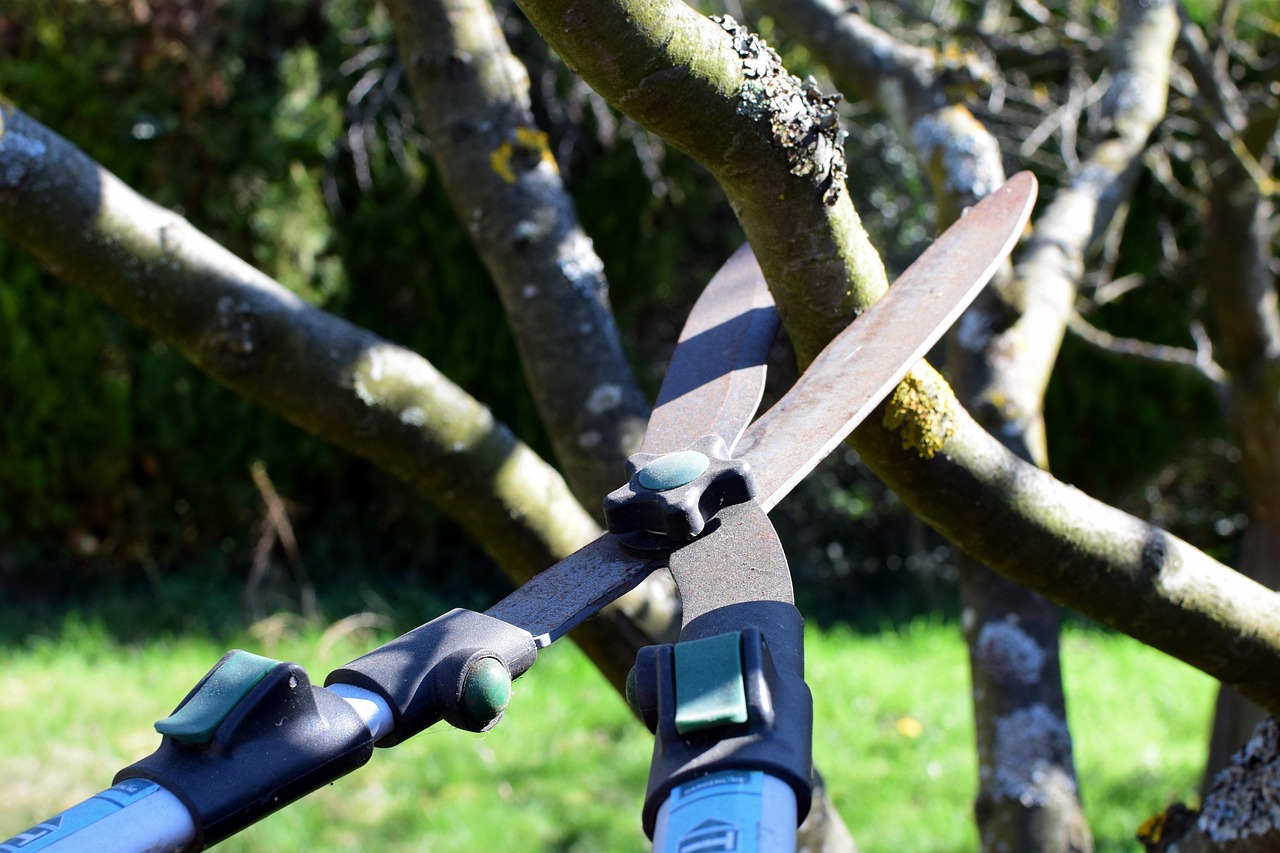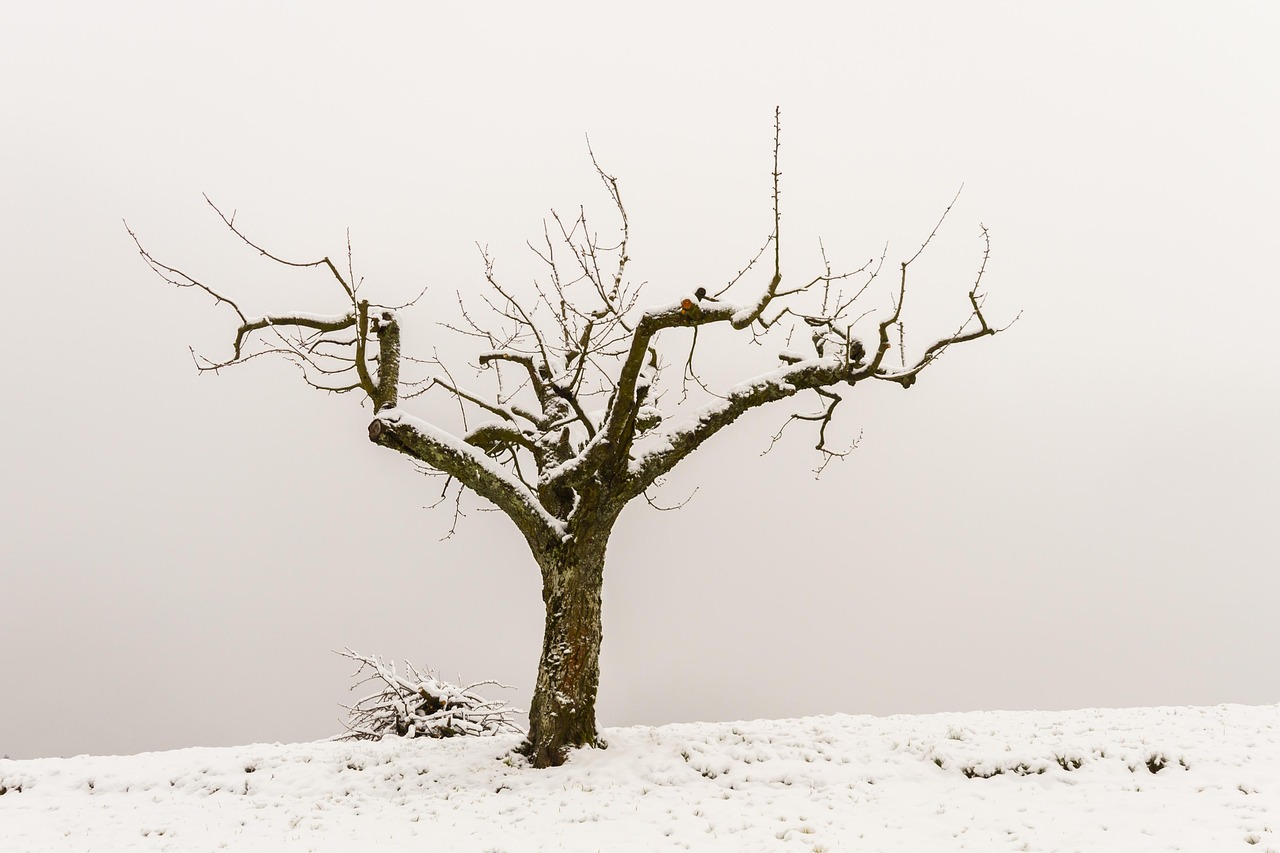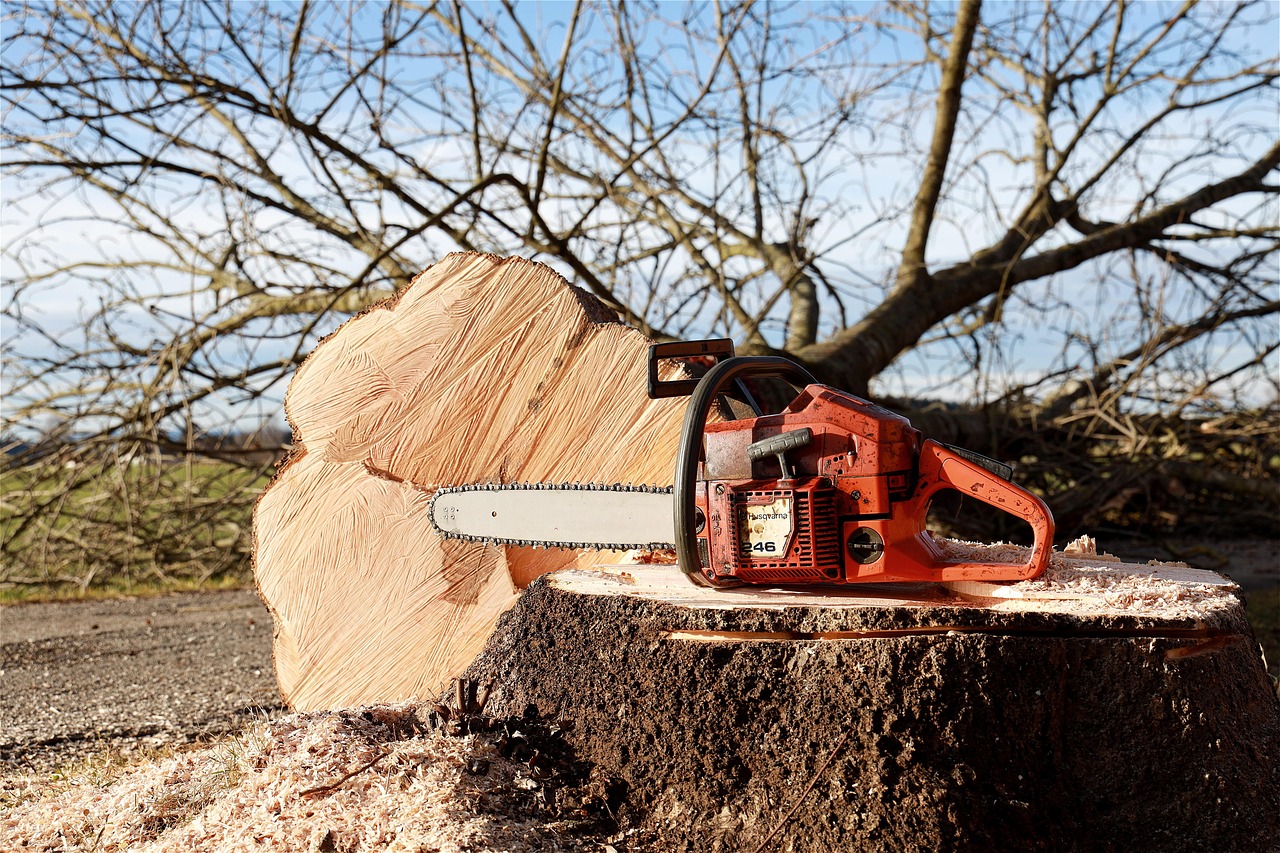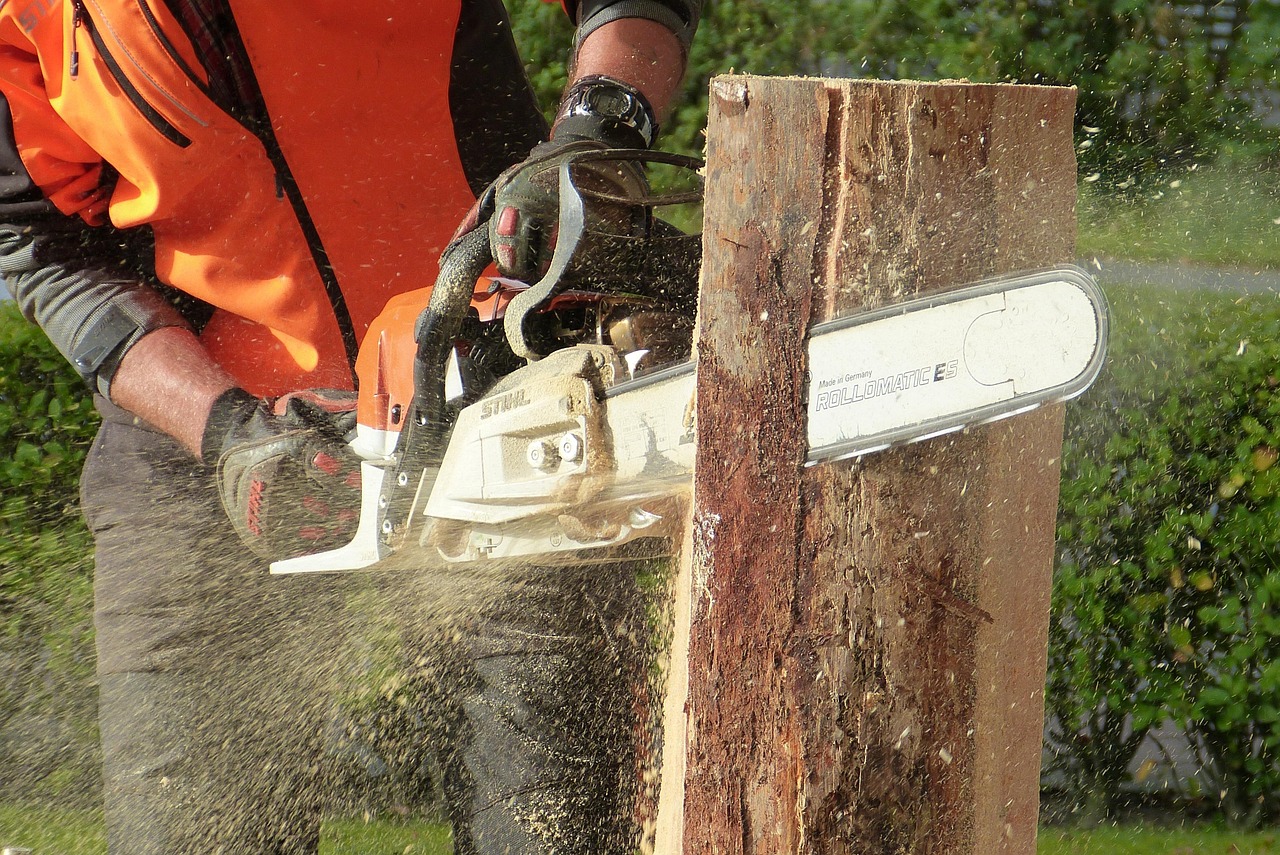Mature tree pruning is essential for maintaining the long-term health of trees. Proper techniques help enhance structure, promote growth, and prevent disease. Regular pruning allows for better air circulation and sunlight penetration, which supports healthy foliage and fruit production.
Pruning mature trees is a critical aspect of tree care. As trees age, their structure can become less stable. Branches may grow too close together, leading to competition for resources. Additionally, older trees are more susceptible to diseases and pests. Therefore, understanding proper pruning techniques is vital for any tree owner.

The right pruning methods can improve a tree’s overall health, longevity, and aesthetic appeal. Mature trees have different needs than young saplings. While young trees benefit from formative pruning, mature trees require more careful consideration to avoid damaging their established structure.
There are several key benefits to pruning mature trees:
- Improved Airflow: Thinning out dense branches allows for better airflow, reducing the risk of fungal infections.
- Enhanced Light Penetration: Removing excess branches lets sunlight reach lower limbs and the ground, promoting healthy growth.
- Structural Integrity: Pruning helps maintain a strong structure, minimizing the risk of branch failure during storms.
- Disease Prevention: Regular pruning can remove diseased or infested branches before they spread.
Understanding Pruning Techniques
Effective pruning requires a solid understanding of various techniques tailored to the specific needs of mature trees. Each method serves a unique purpose and has its place in tree care. Here are some commonly used techniques:

| Technique | Description | Purpose |
|---|---|---|
| Thinning | Selective removal of branches to reduce density. | Improves airflow and light penetration. |
| Raising | Removing lower branches to elevate the canopy. | Enhances visibility and access beneath the tree. |
| Reduction | Shortening branches to decrease the overall size. | Reduces weight on limbs and prevents storm damage. |
| Cleaning | Removing dead, damaged, or diseased branches. | Promotes health by preventing disease spread. |
Each technique should be applied with consideration of the tree species, age, and overall health. For example, some trees heal faster than others. Understanding growth patterns is crucial for effective pruning. Improper techniques can lead to stress or even death of the tree.
The timing of pruning is also important. Most mature trees benefit from pruning during their dormant season, typically late winter to early spring. This period allows for minimal sap loss and reduces stress on the tree. However, some species may require different timing based on their growth cycles.
Tools used in pruning are equally essential for achieving the best results. Having the right equipment ensures clean cuts that heal properly. Common tools include:

- Pruning Shears: Ideal for small branches and delicate work.
- Loppers: Suitable for medium-sized branches that are difficult to reach.
- Saws: Necessary for larger limbs that require more power to cut.
- Safety Gear: Gloves, goggles, and hard hats protect against injuries during pruning.
When using tools, ensure they are sharp and well-maintained. Dull blades can cause tearing and damage to both the tools and the tree. Clean tools between cuts to prevent the spread of diseases from one tree to another.
Before starting the pruning process, it is vital to assess the tree’s condition. Look for signs of disease, structural issues, or damage from storms. A thorough evaluation helps determine which branches need attention and which should remain intact for health and stability.
A well-planned approach can make a significant difference in how a mature tree responds to pruning. Always remember that less is often more when it comes to cutting branches. Over-pruning can lead to stress and hinder growth rather than promoting it.

Mature tree pruning is not just about aesthetics; it’s about ensuring the longevity and health of valuable trees in our environment. Following proper techniques allows trees to thrive for many years, providing beauty and benefits to their surroundings.
Identifying the Right Time for Pruning
Choosing the right time for pruning is crucial for the health of mature trees. While many recommend pruning during the dormant season, the specific timing can vary based on tree species and local climate conditions. Understanding when to prune can maximize the benefits while minimizing stress on the tree.
The dormant season typically occurs in late winter to early spring before new growth begins. During this time, trees are less susceptible to injury. However, some trees may require different timing:
- Spring Flowering Trees: For trees that bloom in spring, such as cherry or dogwood, it is best to prune immediately after flowering. This ensures that you do not remove buds that will produce flowers.
- Summer Flowering Trees: Trees that flower in summer, like crape myrtle, should be pruned in late winter or early spring before new growth emerges.
- Deciduous Trees: Most deciduous trees benefit from pruning during dormancy. This includes oaks, maples, and elms.
- Evergreen Trees: Evergreens can often be pruned in late spring or early summer, after new growth has hardened.
Techniques for Pruning Different Tree Types
Different tree species may require specific pruning techniques to ensure optimal growth and health. Understanding the unique needs of each type can lead to better outcomes. Here are some general guidelines:
Broadleaf Trees
Broadleaf trees, such as oak and maple, have a wide canopy and extensive branching systems. Pruning these trees often involves:
- Thinning: Selectively removing branches to reduce density and improve light penetration.
- Deadwooding: Removing dead or diseased branches to prevent decay or insect infestation.
- Crown Raising: Removing lower branches to allow for clearance and access beneath the tree.
Pine Trees
Pine trees have a different structure than broadleaf trees. When pruning pines, consider these techniques:
- Pinching: For younger pines, pinching back new growth tips can promote fuller growth.
- Thinning: Similar to broadleaf trees, thinning can help reduce density and promote healthy air circulation.
- Reducing: Reducing the height of pine trees should be done cautiously to avoid disrupting their natural shape.
Fruit Trees
Pruning fruit trees is essential for encouraging fruit production and maintaining tree health. Key techniques include:
- Heading Cuts: Cutting back branches to encourage bushier growth and more fruiting spurs.
- Thinning Cuts: Removing excess branches to allow sunlight to reach more parts of the tree.
- Crown Management: Keeping the crown open helps improve air circulation and reduces disease risk.
The Role of Pruning in Disease Management
Mature trees are susceptible to various diseases and pests that can hinder their health. Pruning plays a significant role in disease management by allowing for better air circulation and sunlight exposure. Here’s how pruning helps:
- Removing Infected Material: Regular inspections during pruning can help identify and remove diseased branches before they spread.
- Improving Airflow: Thinning the canopy allows for better airflow, which can reduce fungal growth and other pathogens.
- Encouraging Healthy Growth: Pruning stimulates new growth, which can replace older, weaker wood that may be more susceptible to disease.
In addition to these practices, it is also essential to monitor environmental factors that could contribute to tree health issues. Soil health, moisture levels, and local pests should all be considered when developing a pruning strategy.
Common Mistakes to Avoid While Pruning
Mature tree pruning requires skill and knowledge. Avoiding common mistakes can lead to better results and healthier trees. Here are some common pitfalls:
- Over-Pruning: Removing too many branches can stress the tree, leading to poor health or even death.
- Poor Cuts: Making jagged cuts instead of clean ones can cause damage that may take years to heal.
- Ignoring Tree Structure: Not considering the natural shape of the tree can result in an unbalanced appearance and structural weaknesses.
- Pruning at the Wrong Time: Pruning at the wrong time of year can remove vital buds or promote excessive sap loss.
Adequate training and practice can help avoid these mistakes. Consulting with an arborist or attending pruning workshops can also enhance your skills and knowledge.
Mature tree pruning is a complex but rewarding task. By understanding the right techniques, timing, and methods for different tree types, you can ensure your trees remain healthy and vibrant for years to come.
Tools and Equipment for Effective Pruning
The right tools are essential for successful mature tree pruning. Using proper equipment not only makes the task easier but also ensures that cuts are clean and precise, which is crucial for the tree’s health. Below are some commonly used tools and their applications:
Pruning Shears
Pruning shears are ideal for cutting small branches and twigs. They come in two main types:
- Bypass Shears: These have two blades that slide past each other, similar to scissors. They are excellent for making clean cuts on living wood.
- Anvil Shears: These have a single blade that cuts against a flat surface. They are useful for cutting dead wood but can crush living stems.
Loppers
Loppers are larger than pruning shears and are designed to cut thicker branches. They usually have long handles to provide leverage, making it easier to cut higher branches without needing a ladder.
Saws
For larger branches, a pruning saw is necessary. These saws can be hand-held or pole-mounted for reaching higher areas. When using a saw:
- Choose the Right Type: Use a curved blade saw for branch cutting, as it is more efficient.
- Maintain Sharpness: Keep saw blades sharp to ensure smooth cuts and reduce the risk of damage to the tree.
Safety Gear
Safety should always be a priority during pruning. Essential safety gear includes:
- Gloves: Protect your hands from cuts and scrapes.
- Safety Goggles: Shield your eyes from debris while cutting.
- Hard Hats: Wear a hard hat if working near areas where branches may fall.
Understanding Tree Biology and Growth Patterns
To prune effectively, it is vital to understand some basic principles of tree biology and growth patterns. Trees respond to pruning by producing new growth known as “flush.” This new growth can vary based on the tree species, age, and time of year.
Growth Hormones
Trees produce hormones that regulate growth, with auxins being particularly important. Auxins promote elongation of cells in the shoots and inhibit growth in lateral buds. Understanding how these hormones work can guide pruning decisions:
- Heading Cuts: By making heading cuts, you can stimulate lateral buds to grow, promoting bushier growth.
- Thinning Cuts: These cuts remove entire branches, allowing more sunlight to reach lower parts of the tree while reducing competition for resources.
Tree Reaction to Pruning
Trees react differently to various pruning techniques. Here are some common reactions:
- Flush Growth: After pruning, trees often respond with vigorous growth. This can be beneficial but may require additional maintenance.
- Wound Closure: Trees have the ability to seal wounds. Proper cuts facilitate faster healing, reducing the risk of disease.
- Stress Responses: Over-pruning can lead to stress responses such as excessive sap loss or increased vulnerability to pests.
Best Practices for Pruning Techniques
Implementing best practices when pruning can make a significant difference in the outcome. Here are some strategies to consider:
Make Clean Cuts
Always use sharp tools to ensure clean cuts. A clean cut heals faster and reduces the risk of infection. Aim to cut just outside the branch collar—the swollen area where the branch meets the trunk—rather than flush against the trunk.
Follow the 1/3 Rule
A good rule of thumb is to avoid removing more than one-third of a tree’s foliage in a single season. This keeps the tree healthy and minimizes stress.
Aim for Balance
When thinning, ensure that you maintain balance in the tree’s structure. An unbalanced tree may develop weaknesses and become prone to breaking under stress or wind.
Post-Pruning Care
Caring for trees after pruning is just as important as the pruning process itself. Post-pruning care includes monitoring tree health and ensuring proper environmental conditions:
- Watering: Ensure trees receive adequate water after pruning, especially if significant foliage has been removed.
- Nutrient Management: Consider applying a balanced fertilizer if necessary, as pruning can deplete nutrients.
- Pest Monitoring: Keep an eye out for pests or diseases that may take advantage of weakened trees post-pruning.
By following these practices and understanding the biology behind tree growth, you can enhance the effectiveness of your pruning efforts. Engaging in proper techniques and post-care ensures your mature trees remain healthy and resilient throughout their lifespan.
Advanced Techniques for Enhancing Tree Health
In addition to basic pruning techniques, there are advanced practices that can further enhance the health and longevity of mature trees. These methods are often employed by professional arborists and can greatly benefit tree care.
Crown Restoration
Crown restoration is a technique used on trees that have been damaged or improperly pruned in the past. This method focuses on reshaping the tree’s canopy to promote healthy growth and structure. Key steps include:
- Reestablishing Structure: Identify the main leader and lateral branches to create a strong, balanced crown.
- Selective Thinning: Remove competing branches to allow the main leader to thrive and regain dominance.
- Encouraging New Growth: Promote new growth by making cuts that stimulate lateral buds, leading to a fuller canopy.
Pollarding
Pollarding is an intensive pruning technique often used for specific tree species. It involves cutting back branches to the same point every year, resulting in a dense head of foliage. This method can be beneficial for:
- Controlling Size: Pollarding keeps trees smaller and more manageable.
- Enhancing Aesthetics: This technique can create a unique appearance, making it popular in urban landscapes.
- Improving Light Access: Pollarded trees allow more light to reach the ground and surrounding plants.
Integrated Pest Management (IPM)
Implementing Integrated Pest Management (IPM) strategies can significantly improve tree health post-pruning. IPM combines cultural, biological, and chemical practices to manage pests effectively. Key components include:
- Regular Monitoring: Inspect trees frequently for early signs of pest infestations or disease.
- Healthy Practices: Maintain good cultural practices such as proper watering, fertilization, and mulching to promote tree vigor.
- Biological Controls: Use beneficial insects or natural predators to manage pest populations without harming the tree.
Environmental Considerations in Tree Pruning
The environment plays a significant role in how trees respond to pruning. Factors such as climate, soil quality, and surrounding vegetation can affect tree health. Understanding these influences can help you make informed decisions during the pruning process.
Soil Quality
Healthy soil contributes to robust tree growth. Take time to evaluate soil conditions before and after pruning:
- Nutrient Levels: Test soil nutrient levels to ensure they meet the needs of your trees.
- Drainage: Assess drainage capabilities; poor drainage can lead to root diseases.
- pH Levels: Ensure soil pH is within the optimal range for your tree species.
Climate Impacts
Different climates can alter the growth patterns and health of trees. Consider these aspects when planning your pruning:
- Temperature Extremes: Trees in areas with harsh winters may require more protection during dormancy.
- Moisture Availability: Water availability can affect tree resilience; adjust care accordingly during dry seasons.
- Wind Exposure: Trees exposed to strong winds may need additional structural support through strategic pruning.
Final Thoughts
Mature tree pruning is not just a task; it is a vital practice that requires knowledge, skill, and careful consideration. By employing proper techniques, understanding tree biology, and practicing good post-pruning care, you can greatly improve the health and longevity of your trees. Advanced techniques such as crown restoration and pollarding can further enhance tree vitality while addressing specific needs based on environmental factors.
Your approach to pruning should always be informed by the unique characteristics of each tree species and its specific growing conditions. Regular monitoring and care will ensure that your trees not only survive but thrive in their environment. Embracing these principles will lead to lush, healthy trees that contribute beauty and ecological benefits for years to come.
By investing time and effort into proper pruning techniques, you are playing an essential role in maintaining the health of mature trees in your landscape. Healthy trees provide shade, enhance property value, and improve air quality, making them invaluable assets to our environment.
